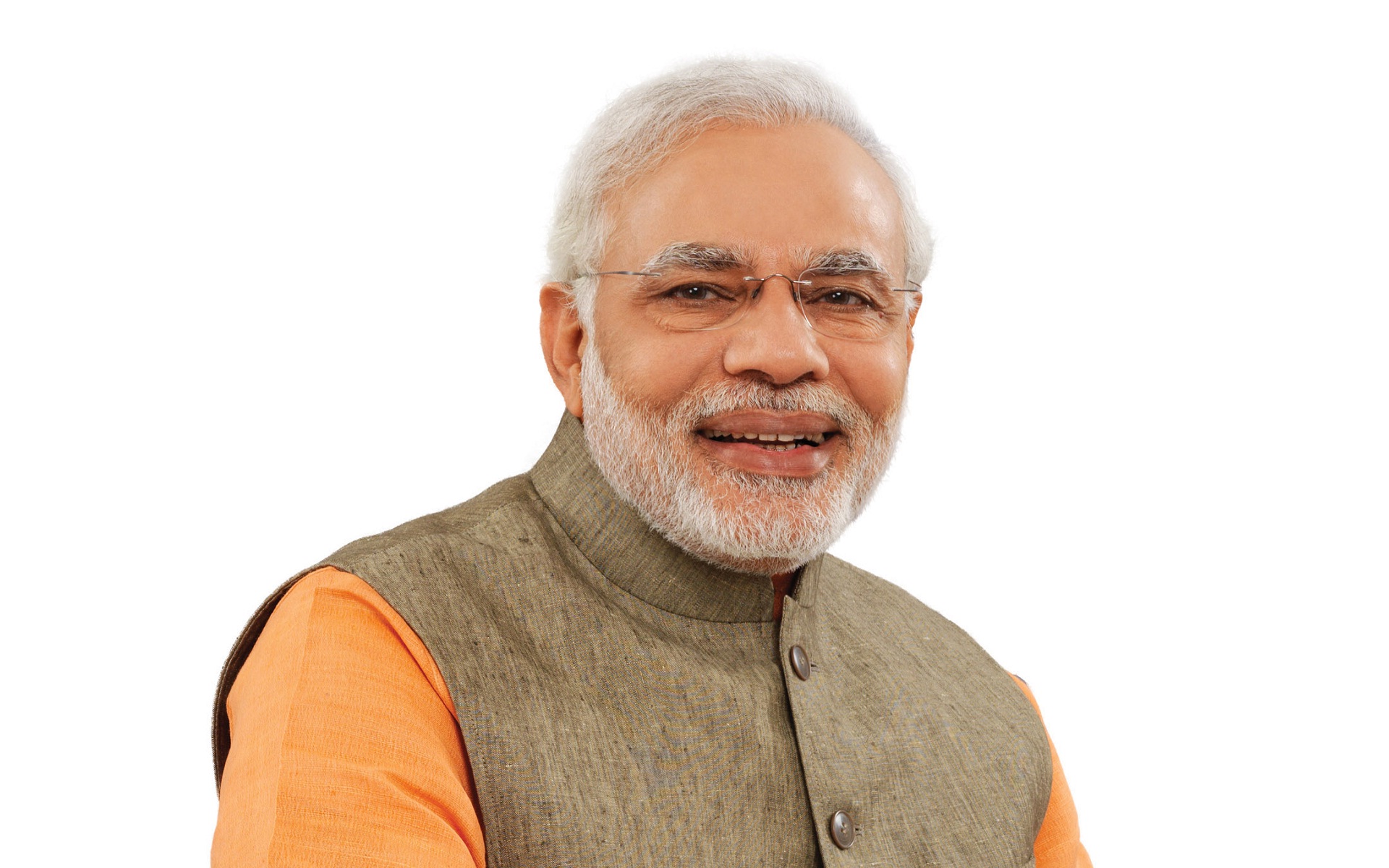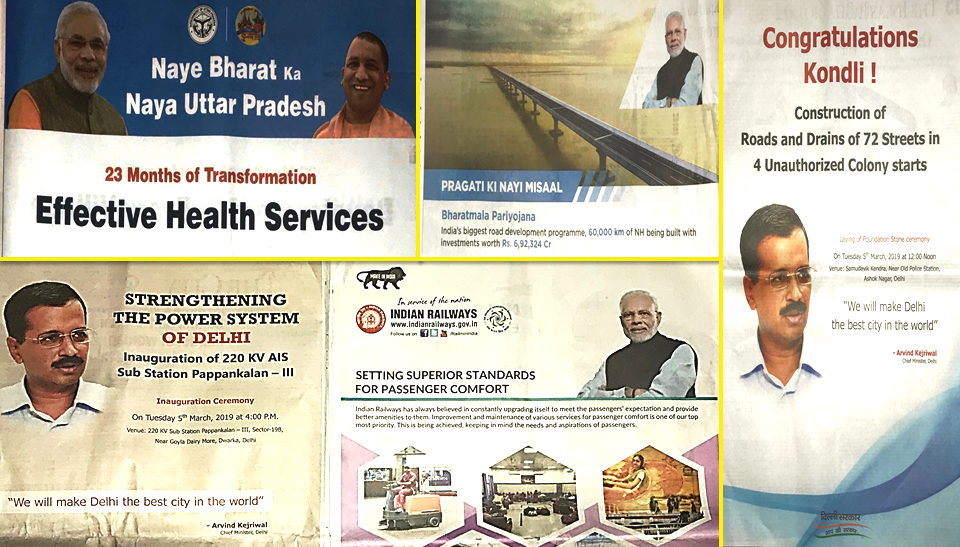The advertisement industry is a key tool for political parties today, from the PM to the Opposition we see how leaders are projected as ‘brands’ and a culture of commoditized politics begins to be taken for granted.
The New Leam Staff

[dropcap]A[/dropcap]s we near the upcoming Lok Sabha elections, we find ourselves flooded with an overactive advertising industry that has ensured that the political branding of the ruling political party and most significantly of the PM can be used to leave a lasting impact on the voter. No wonder, from billboards at petrol pumps, public toilets, malls, highways, ration booths, dispensaries to newspapers, shopping websites and cinema tickets- we discover ‘brand Modi’ everywhere.
The political culture in India has over the years become increasingly indebted to the advertising industry and even the Opposition is not far behind in using it to convey its agenda. Delhi CM Arvind Kejriwal, Congress President Rahul Gandhi are all to be seen smiling on billboards and making claims for political transformation. Who are the others in their parties, who are their other colleagues who have made their success stories possible?
In an age where political leaders project themselves like brands and ensure that they follow the voter everywhere- no wonder democracy in the nation and within the political parties is surely compromised. The obsession with the cult of the individual, the narcissist projection of the self and the denial of a culture where colleagues collectively run a political establishments or deliver promises to the people is fast being replaced by a monologue of a single leader. In this social context, where is a democracy inside the party and why are we reducing spaces for actual dialogue and creating an environment where advertising does all the talking?
We live in times where the advertising industry is one of unprecedented importance for the political establishment. Advertising and elaborate social media campaigning carried out by political parties in India has acquired an overarching presence in the contemporary times, with large amounts of the government’s budget dedicated exclusively to such campaigning. We are aware that advertising as an organised industry is of vital importance for any capitalist or neo-liberal society which has to constantly view the audience because it finds in them a ‘potential buyer or a consumer’- the advertising industry makes it easy for capitalists to sell their products, seduce customers into the logic of temptation and carefully lures the buyer into believing that the ownership of a certain ‘brand’ is a sure guarantee to a satisfied life. Today, political parties are also running by the same logic and look at themselves essentially as brands that have to be sold, thus advertising is the most readily utilised mechanism of achieving this target.

From the front pages of important newspapers and magazines, to billboards and hoardings at petrol pumps, malls, highways, public toilets, buildings, red lights and even behind auto rickshaws- we see political parties reducing themselves into ‘brands’. Specialised teams are employed to sell statistics on how well an advertisement might do in a particular context, how to design it best that it leaves a lasting impact and how it may be used as device to mould the impressionable minds of the voters. One of the arguments that governments have offered in defence of spending such high portions of the budget on advertising is that it provides information on government policies and achievements. What we however must remember is that while some advertisements may be used to give away information, much of it may be part of the propaganda machinery.
While policy achievements and the grassroots change that a particular party may have impacted is visible upon a careful scrutiny of the population and the surroundings and if a government has really achieved milestones in key departments like education, healthcare, employment and development then even with little advertising it can compel people to vote back in the upcoming elections.
Moreover, an excessive fetish with advertising is problematic for several other reasons such as that it tends to reduce the entire party and its ideology into a personalised and narcissist personality cult that projects itself like a ‘brand’. That face, that smile, that penetrating gaze seems to haunt you from all possible sides whether you are driving a car on a remote village road, shopping from an online website, freshening up at a roadside public toilet or even waiting for your turn at an ATM queue. Wastage of tax payers’ money that could have been devoted to pressing important requirements, excessive utilisation of public funds for partisan interests, establishing an excessive and non-dialogic monopoly on impressionable minds in a milieu where actual dialogue is discouraged and building a culture where politics and work for public welfare is largely commoditized are some of the key problems with the improper utilisation of advertisements by the contemporary culture of politics. While we see the culture of advertising being used to impact the voter, leave an impact on her voting decision and distract her from the work of the opponent, it’s time for the actual citizen’s voices to transcend the walls of rhetoric and the propaganda machinery and make an informed political choice. If we wish to save democracy, we must look beyond the things billboards and advertisements choose to tell us.














